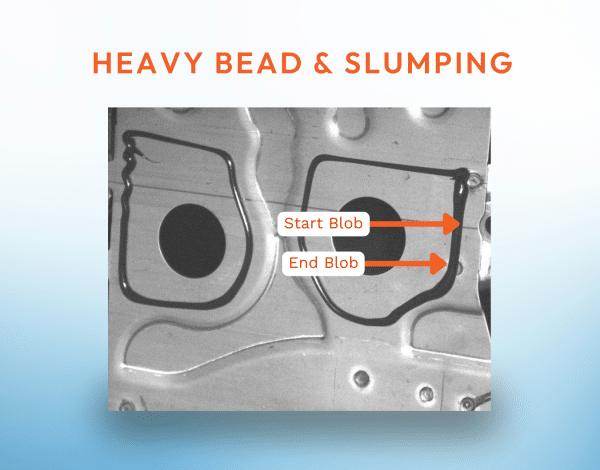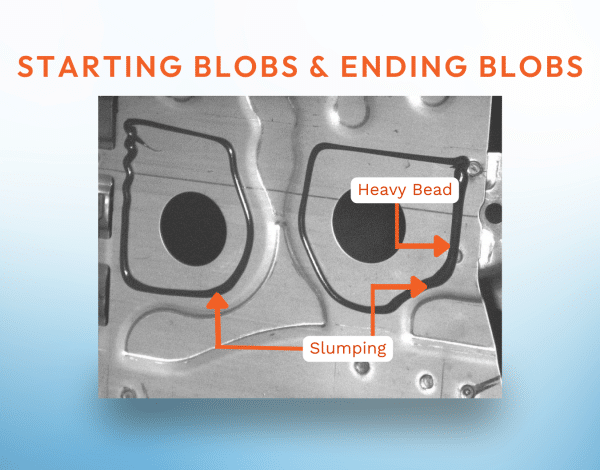You've Seen Uneven Viscosity Before
There’s a picture we often use in presentations.
In this one picture, we can show six common sealant dispensing defects. During presentations, we’ll relate these defects to inconsistent material temperature causing material viscosity variation. (Obviously, these defects can have other causes, but we always look at dispensing through the prism of process temperature and viscosity control. We can’t help it.)
For the purposes of this blog, we’ll assume this is an automated dispensing application (because that’s how the sample shown was made). If this were a manual application, the operator would represent a big enough variable to account for everything.
Let’s do a quick breakdown of the defects we see and how they might be attributed to uneven viscosity at the point of application.
Thin Bead
In a thin bead situation, there may be insufficient applied material to do the job. Without even knowing the specification, we can see that these areas are narrower than the rest of the bead.
As the material temperature changes, you’ll see different performance at the point of application. If the sealant is too viscous, you may see a narrower but taller bead, or you may simply get less material, as the viscosity requires more pressure to dispense.
Heavy Bead & Slumping
Heavy beads can indicate too much material has been applied. However, in the case of volumetric dispensing, where each volume dispensed is tightly controlled, the change in bead width is likely offset by the change in bead height.
As the material warms, it becomes less viscous and lays flatter and wider. This “spread”, or “slump”, can significantly compromise the function of the bead. Without the proper profile, optimal adhesion is next to impossible. Additionally, if the material spreads out of the designated area, it can create both functional and aesthetic issues.
Starting Blobs & Ending Blobs
Starting blobs and ending blobs show where too much material has been applied for one application.
Sealant can absorb process heat as it waits for the next dispense. When the next dispense starts, it is common for the warmer material to flow faster and “slump”, causing the start blob.
And when warmer sealant is introduced into the dispense path, the less viscous material may create the end blob as the path ends and the valve closes. Functional and aesthetic issues, as described above, also apply to these blobs.
Tail-Off
Tail-off occurs when viscous material is dragged away after the sealant gun is shut off as it returns to the home position. Like the end blob, the sealant viscosity may be beyond the capacity of the gun’s shut-off mechanism.
Summary
All of these defects can occur in manual operations, but without intervention, a dispensing robot will mindlessly repeat these problems. (Again, these defects may have other causes, but we always look at dispensing through the prism of process temperature and viscosity control.)
Having the right amount of sealant in the right place with the right profile is necessary for each dispense in a sealant application. Producing the perfect bead of sealant with a dispensing robot requires material to be dispensed at the right viscosity. The changes in ambient temperature from morning to evening and season to season create optimal conditions for a variety of defects.




